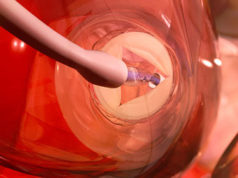By Gregory Dehmer
The CathPCI Registry is one of seven clinical registries that reside within the National Cardiovascular Data Registry (NCDR) of the American College of Cardiology Foundation (ACCF). This effort began in 1987 as a standardised database to characterise the clinical profiles and outcomes of patients undergoing cardiac catheterisation and percutaneous coronary intervention PCI in the USA.
Since then, the database has evolved to a formal registry and undergone several updates to remain relevant to current clinical practice. Although participation is voluntary, approximately 1,500 US facilities are enrolled and the registry has accumulated over 12 million patient records. It is estimated to capture 85% of the PCIs performed in the USA. The registry now provides clinical data that is used by institutions to document their processes and benchmark outcomes of care in the cardiac catheterisation laboratory. Furthermore, risk adjustment models for in-hospital mortality and PCI associated bleeding complications have been developed using these data.
Each participating facility receives a report of their data with aggregate data from the entire registry for comparison.
However up to this point, data from the registry have not been generally available. In November 2012, the NCDR published its first general report of data from the CathPCI registry1. This report included 1,110,150 patients undergoing only diagnostic cardiac catheterisation and 941,248 undergoing PCI during that period.
The report includes many notable findings related to the contemporary practice of invasive cardiology in the USA. For example, 49% of the facilities performed ≤400 PCIs annually.
Moreover, 26% of the facilities performed ≤200 PCIs annually, but this accounted for only about 4% of the total number of PCIs that were performed. This is a provocative finding because the most current US PCI guideline states that facilities that perform ≤200 PCIs annually, unless geographically isolated, should carefully consider whether to continue to offer this service. PCI without on-site cardiac surgery was performed at 33% of facilities, representing 12% of all PCI procedures performed. Among facilities performing PCI without on-site surgery, 89% had a case volume of
Another notable finding in the report was that patients aged 65 years of age or older represented 39% of those undergoing PCI, with 12% being 80 years of age or older. Also, almost 80% of PCI patients were overweight (body mass index ≥25 kg/m2), 80% had dyslipidaemia, and 28% were current or recent smokers.
Among patients undergoing elective PCI, 52% underwent a stress study before the procedure, with stress myocardial perfusion being used most frequently. Calcium scores and coronary computed tomography angiography were used very infrequently (<3%) before diagnostic or PCI procedures. Radial artery access was used in about 8% of diagnostic and 7% of PCI procedures. Primary PCI was performed with a median door-to-balloon time of 64.5 minutes for non-transfer patients and 121 minutes for transfer patients. In-hospital risk-adjusted mortality in ST-segment elevation myocardial infarction patients was 5.2% in this sample. Considerably more data is available in the publication.
Conclusion
The NCDR registry has been termed a “national treasure” because it provides a rich source of clinical information about the practice of cardiology. Sharing these data in a publication will hopefully identify both strengths and weaknesses that allow further improvements in quality to occur.
Reference
1. Dehmer et al. J Am Coll Cardiol 2012; 60:2017–31
Gregory Dehmer is an interventional cardiologist and professor of Medicine at Scott & White Healthcare, Temple, USA, and the Texas A&M Health Science Center College of Medicine, Bryan, USA.
Other authors of the report in J Am Coll Cardiol include Douglas Weaver, Matthew T Roe, Sarah Milford-Beland, Susan Fitzgerald, Anthony Hermann, John Messenger, Issam Moussa, Kirk Garratt, John Rumsfeld and Ralph Brindis.










